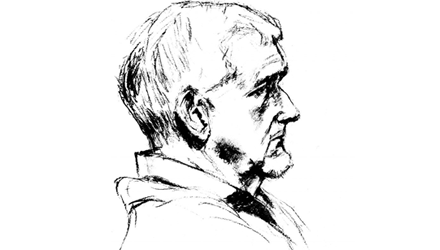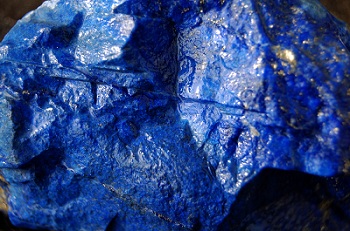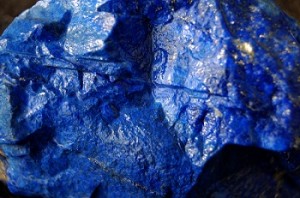Do you remember that time of freshness, when some words – heard for the first time – had a resonance of mystique?
This poem attracted a comment from Anne Boileau, who is currently Chair of The Suffolk Poetry Society and an excellent poet. Lapis Lazuli features in one of her recent poems, she sent me a copy and very kindly agreed that I could display it on this website. So please look under my poem to read her atmospheric and magical The Blue Lawn.
PLEASE CLICK THE ARROW BUTTON ABOVE TO HEAR THIS POEM
My first encounter with the exotic
was in 1952, aged eight,
in E for Egyptology —
within a second-hand, dog-eared copy,
of a monochrome encyclopaedia
I found ‘Lapis Lazuli’…….
‘Lapis’ the Latin word for stone,
Lazaward, the Persian name of the mine,
Latinised to ‘Lazuli’.
I learnt the gem was blue,
that powdered Lapis shadowed
Cleopatra’s eyes,
and six centuries ago Cennino Cennini
made Ultramarine for painters —
a costly pigment of finely ground Lapis :
‘…….a colour illustrious,
one could not say anything about it,
that its quality would not surpass.’
Yet in 1953 I still hadn’t seen it.
Jewellers ignored a child’s enquiries,
and urged me from their premises.
So alone, I rode the steam train
twenty-eight miles to Cambridge
to visit Pharaohs in Fitzwilliam Museum.
Amongst displays of dusty pottery,
I searched grave wear from sarcophagi,
until I found stone scarabs of washed-out blue.
Until — I found the mundane,
the drab spectrum of reality,
which never colours dreams.
The Blue Lawn by Anne Boileau
My uncle’s lawn was blue all summer long.
It was as if the sky had cast its cloth
upon the ground; like lapis lazuli,
the precious pigment for Mary’s gown.
Cousin Raymond took the garden on,
the lawn was rotovated, rolled, re sown.
But did he know why it was blue
why year on year those speedwells grew?
Footsore monks down from the heath
would shake their dusty habits out.
Seeds of the flowers they’d sewn into the hems
were scattered all around.
They sank down for the washing of the feet
laughed as they thawed out by the fire,
tucked in to salt fish,
mead and cheese.
In that Dorset coombe bells rang out
for Prime, Mattins, Vespers, Compline;
plainsong lifted to the hills
from Cattistock to Beaminster.
But the bells fell mute, were melted down
along with lead peeled off the roofs.
Illuminated manuscripts twisted, curled,
consumed by fire.
Abbots, brethren, monks and nuns
and all their chickens, sheep and geese
receded in a mist of blue.
And now the sky has gathered up its cloth
from my cousin’s lawn at Rampisham.
The turf is free of weeds, bright green
and smooth as baize.
Anne Boileau
Footnote: Germander speedwell, veronica chamaedris, is the traveller’s flower.
Pilgrims would pick them before a long journey and stitch them into their hems for good luck and God’s speed.



Anne, thank you for your interesting comments. How many children today would be allowed to take a train alone, aged nine, to an unknown city to make such a discovery. I had that richness in childhood freedom. Ivor
I love this poem. I heard somewhere Michelangelo left unfinished one of his paintings (Mary’s gown uncoloured) because he had been awaiting delivery of a large block of lapis lazuli from Afganistan and it did not arrive . I believe it was the most expensive pigment and subject to contract before a commission would be undertaken.
I like the way the child is so curious about this heavenly colour and must make a special train journey to the Fitzwilliam to see it. And I was sorry about his disillusionment in the last stanza. I suppose we are all to some extent grieving for our own childhood and the bright blue we anticipate but which must inevitably fade.